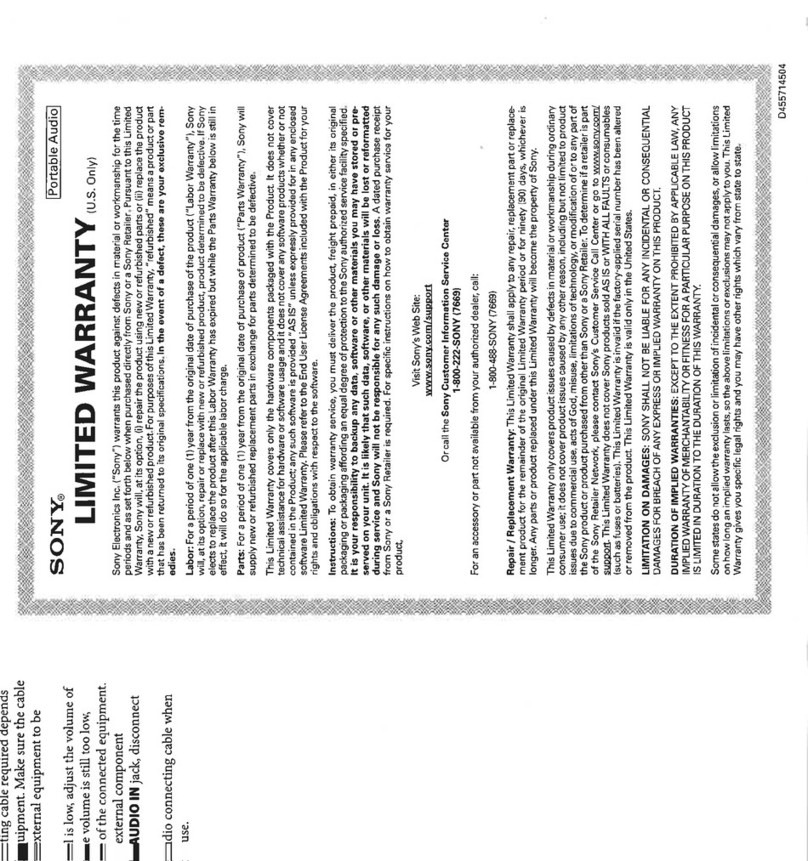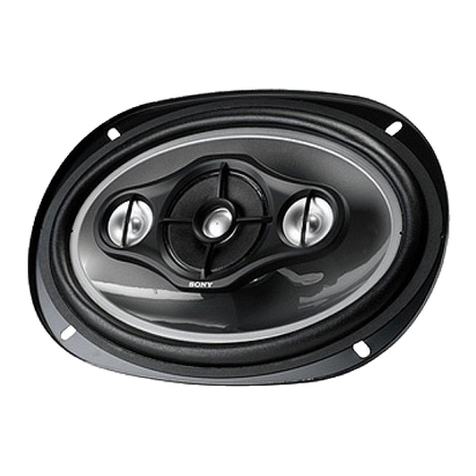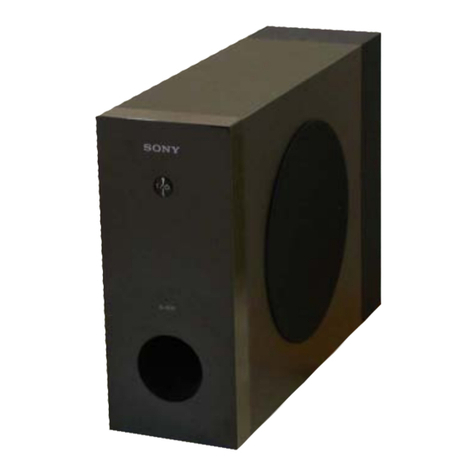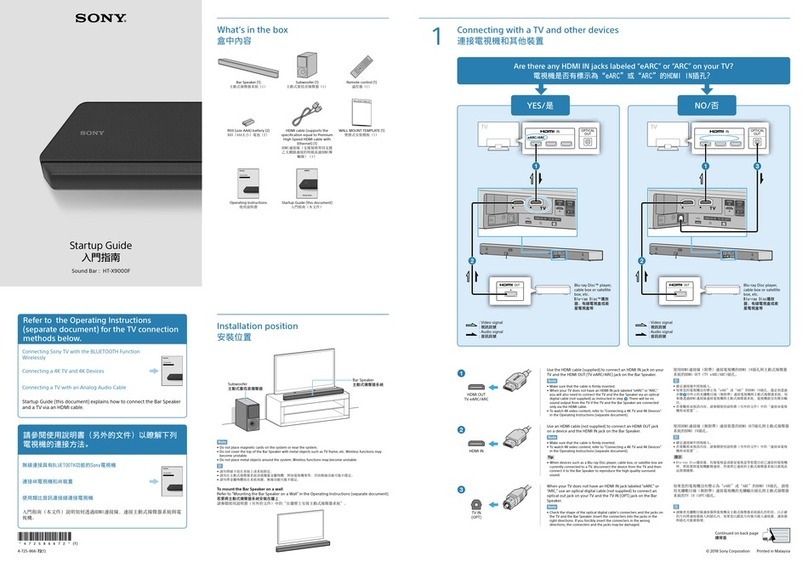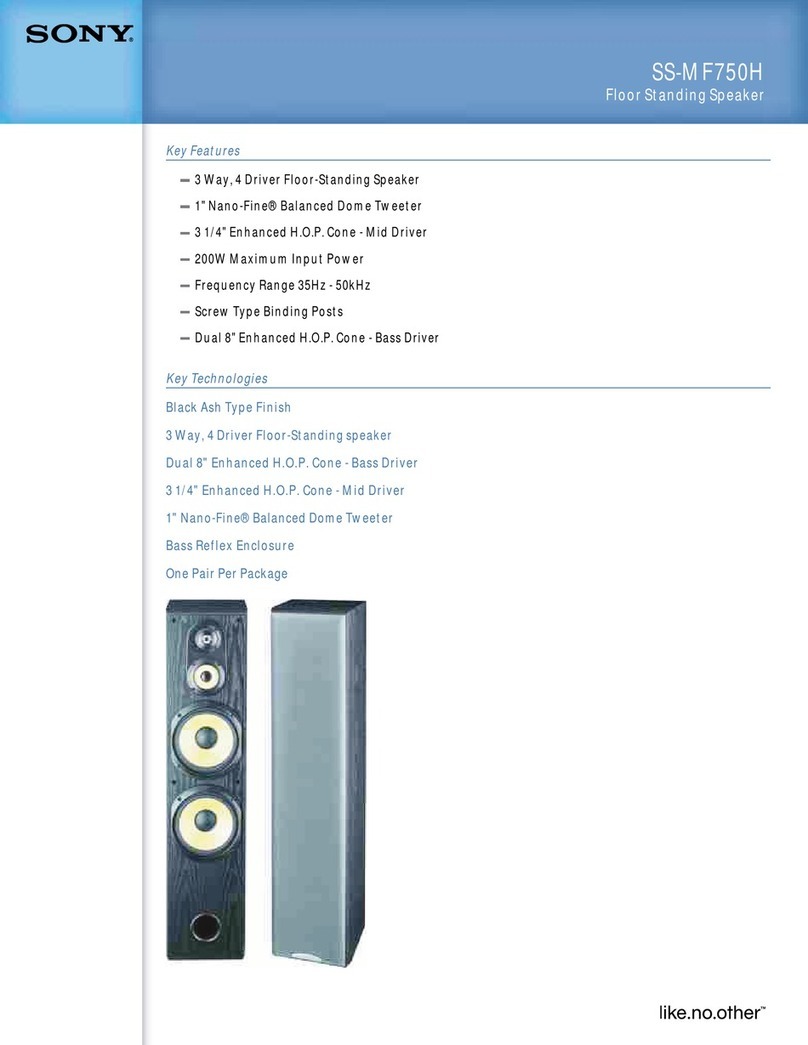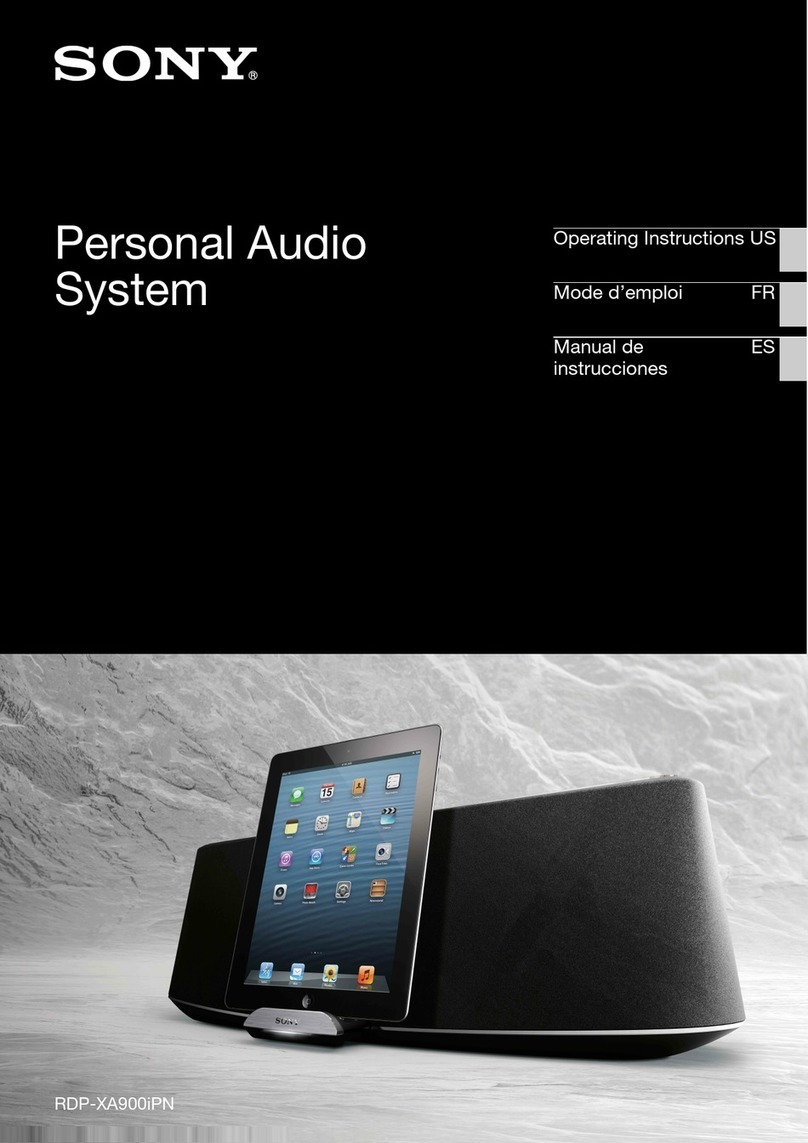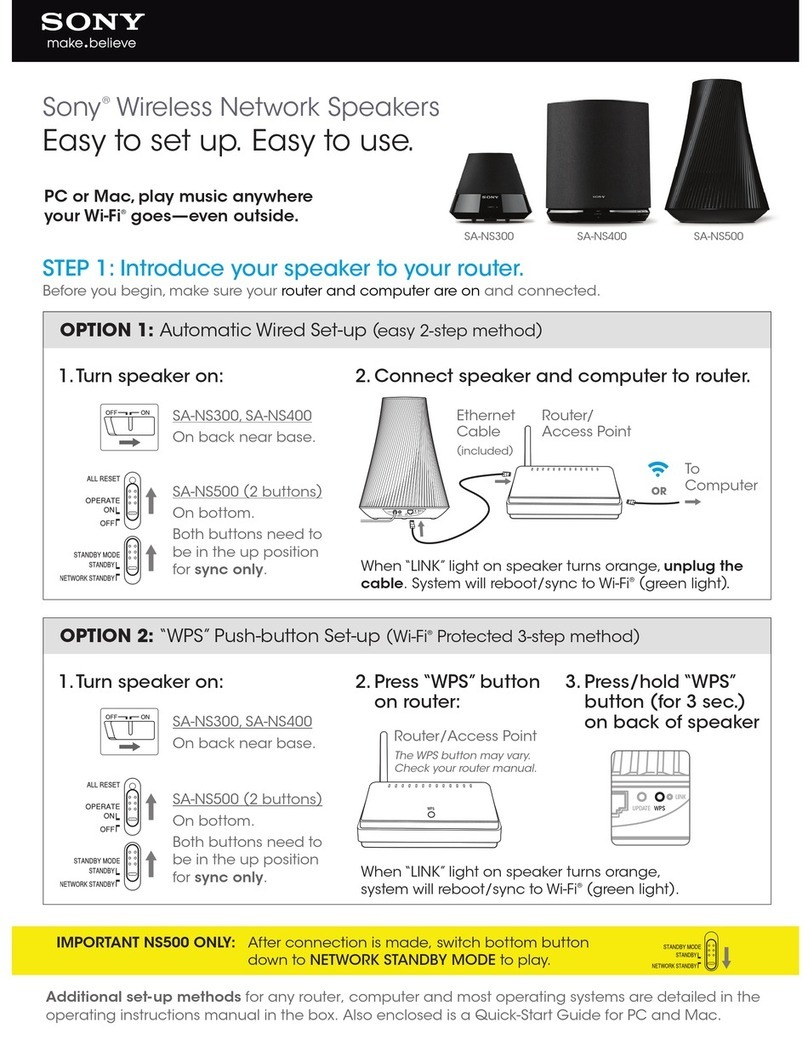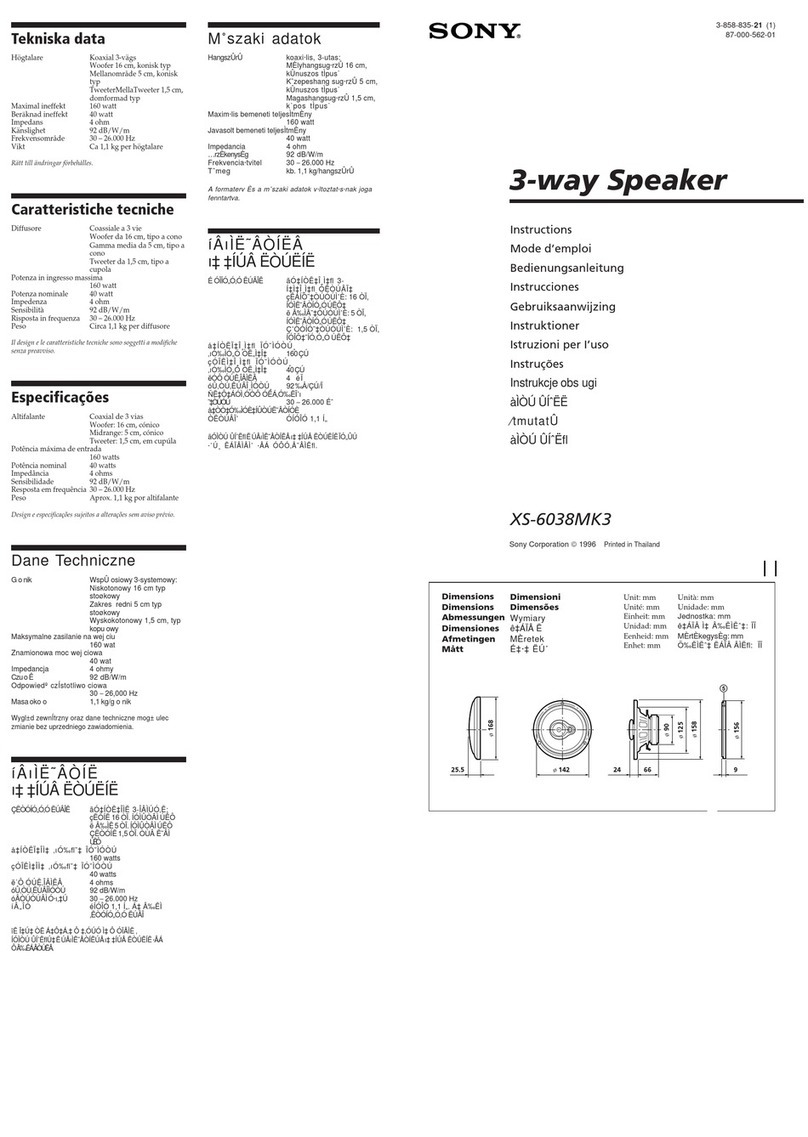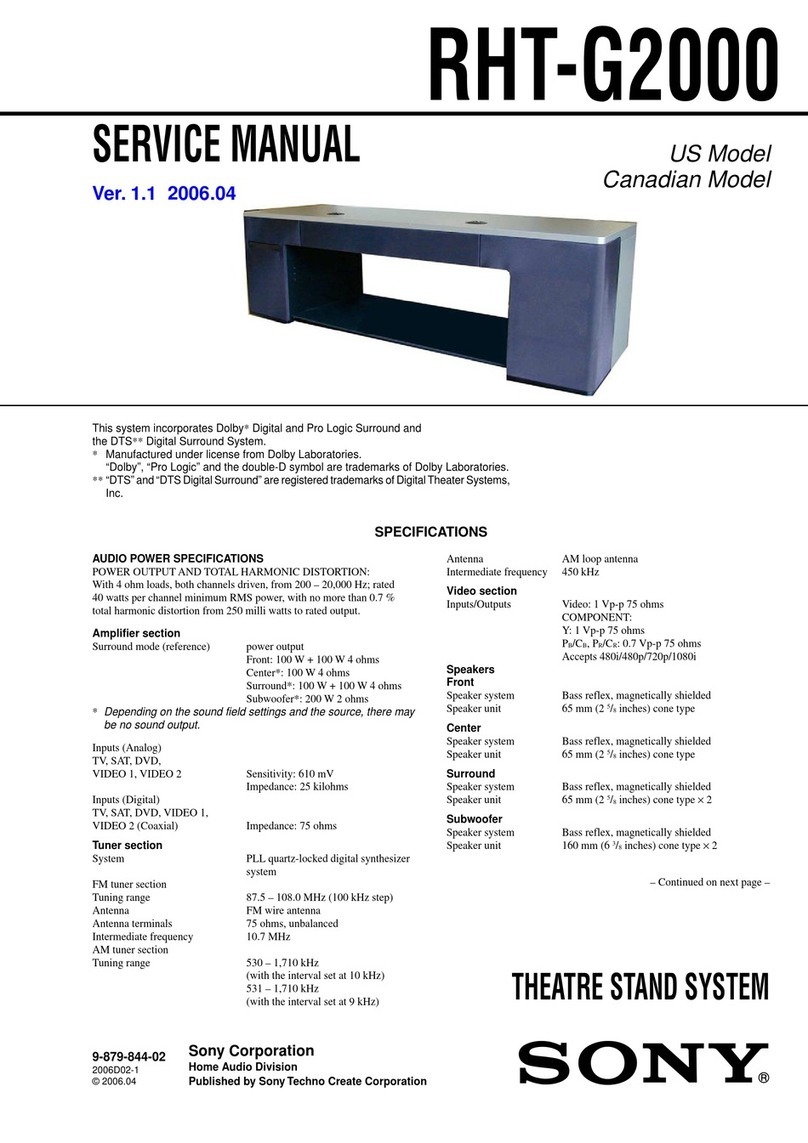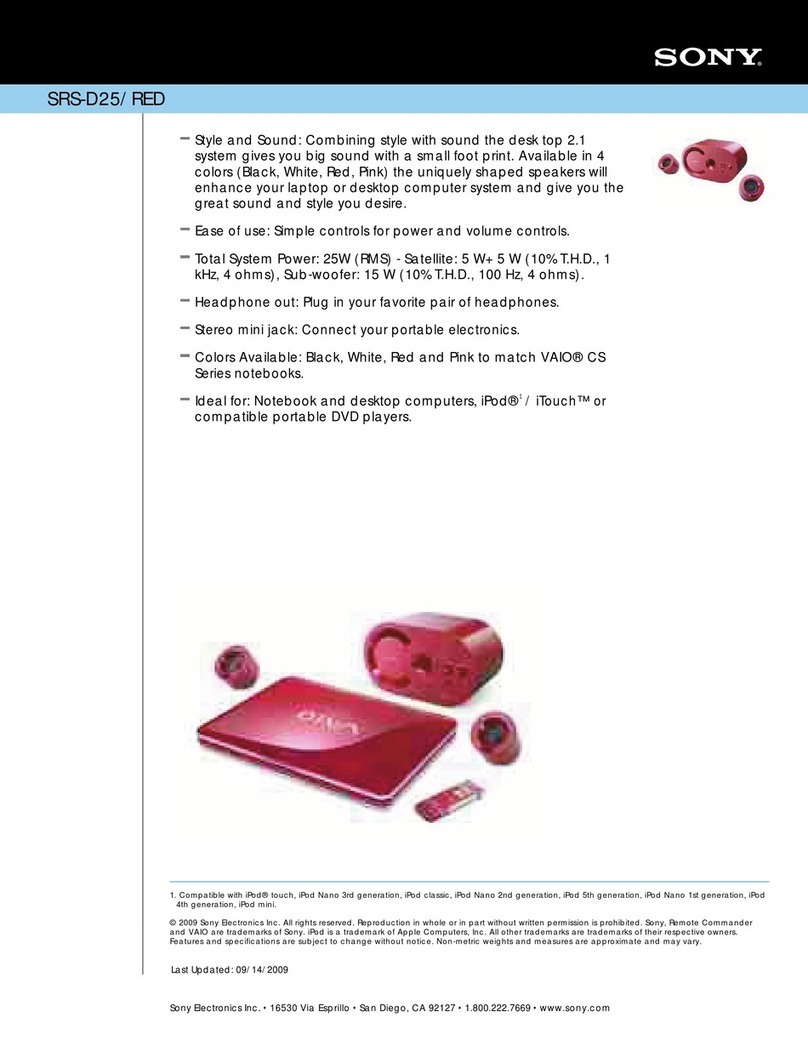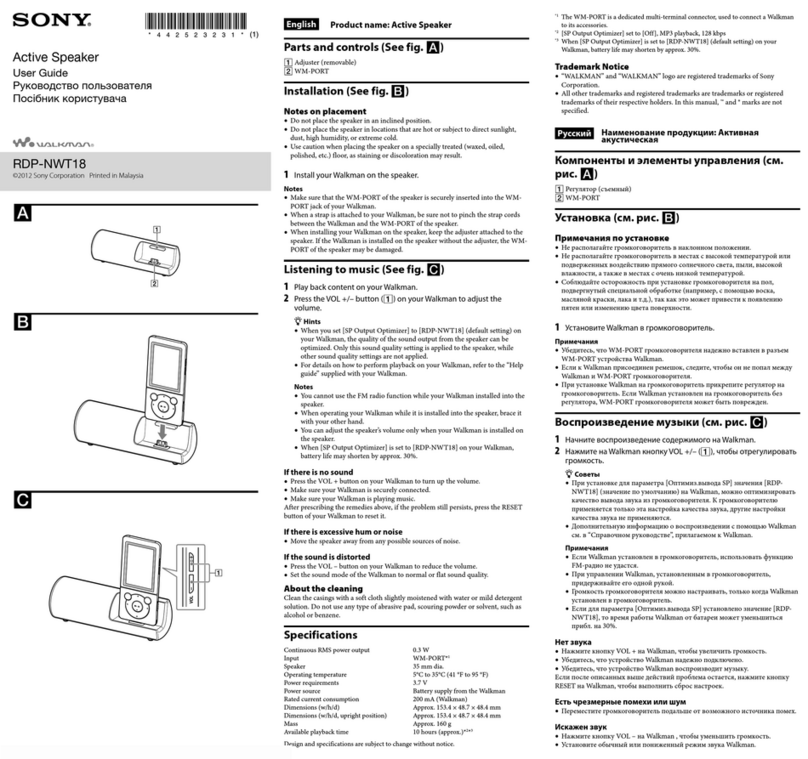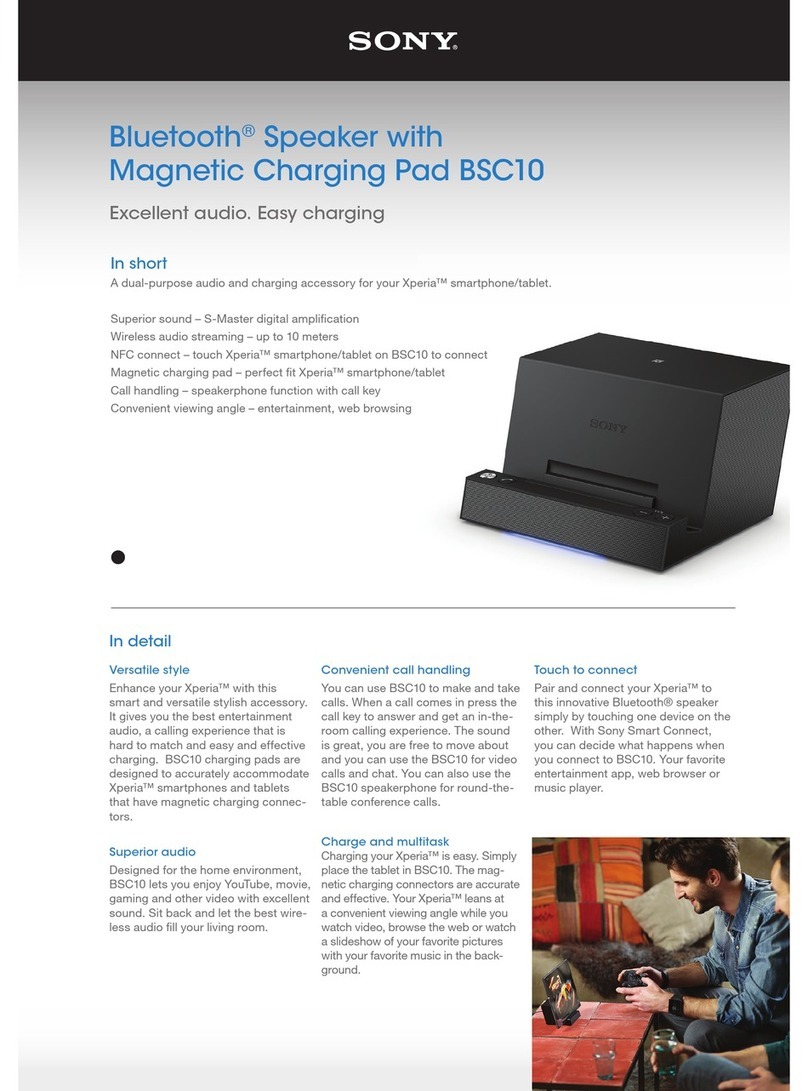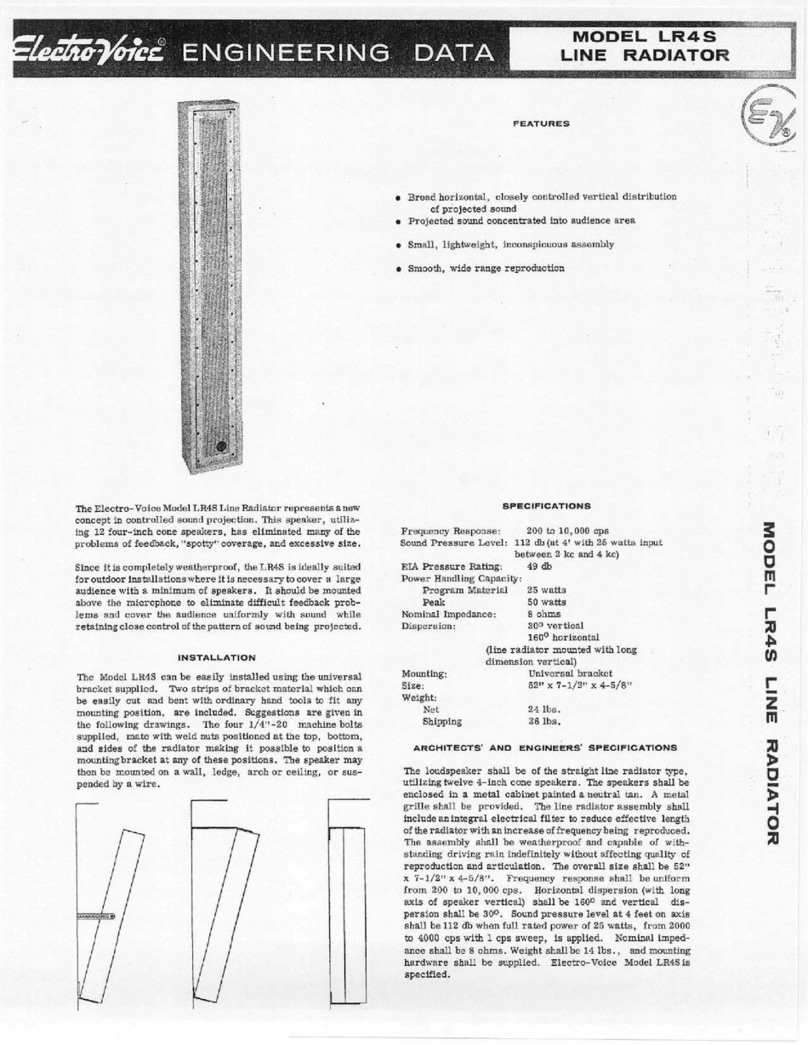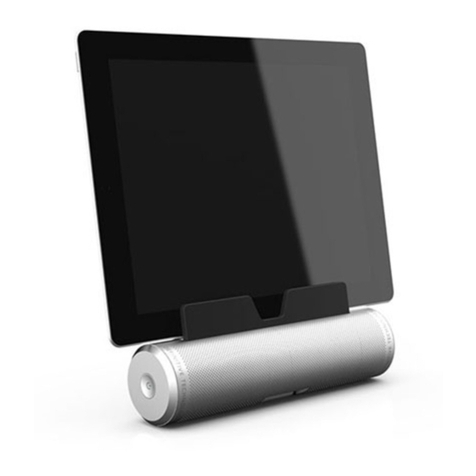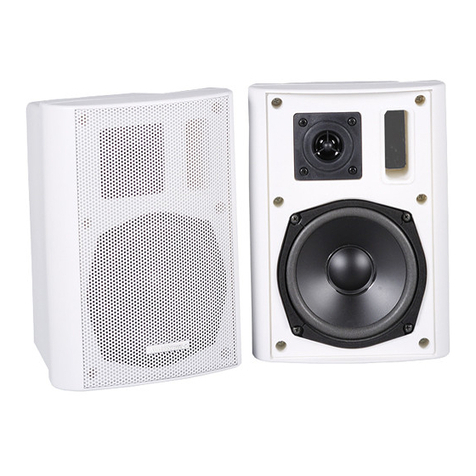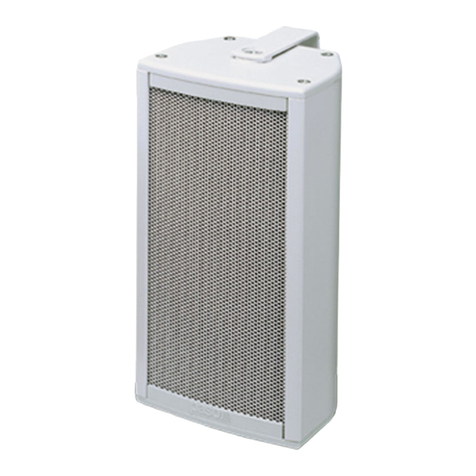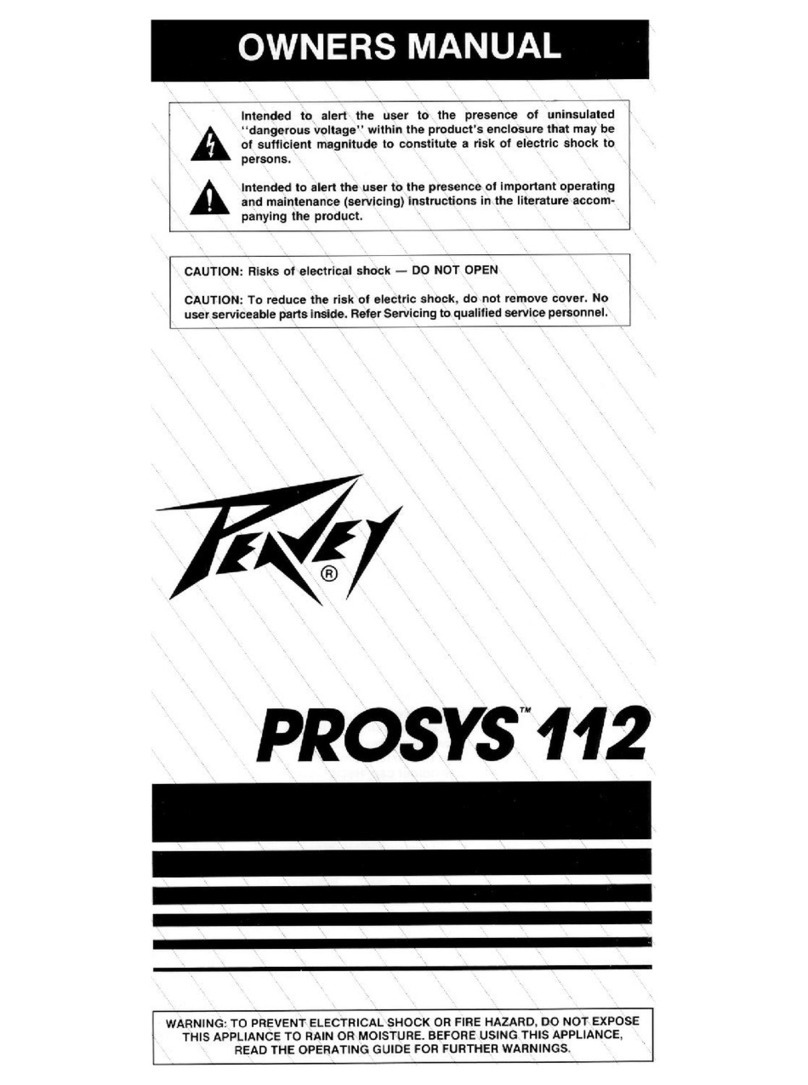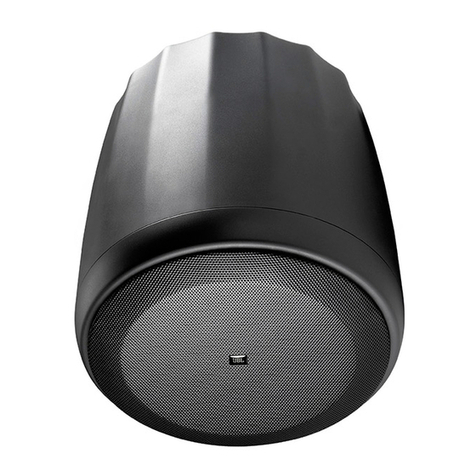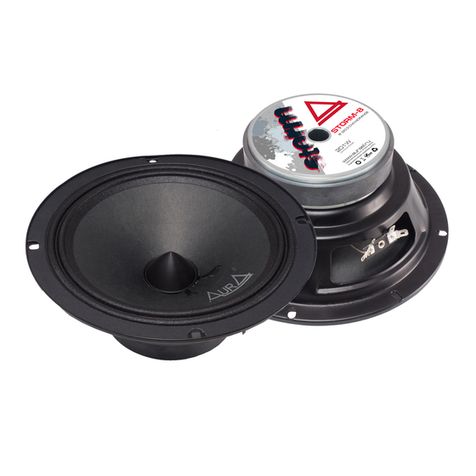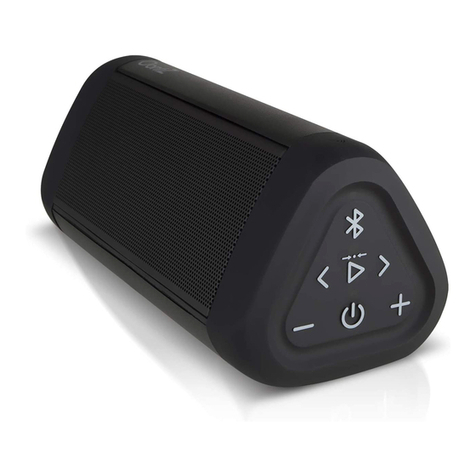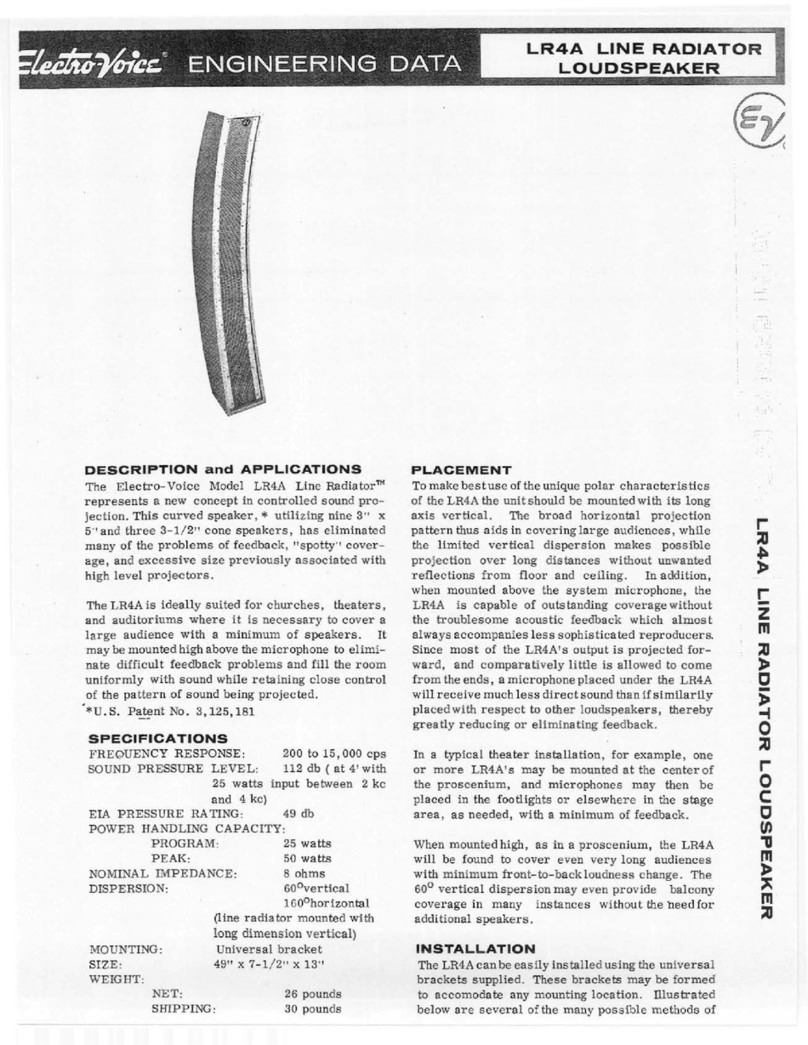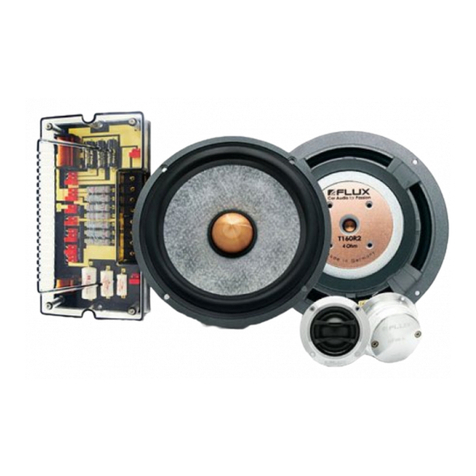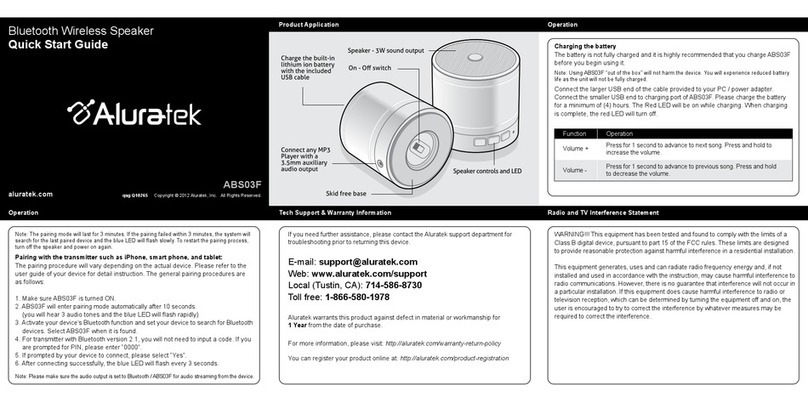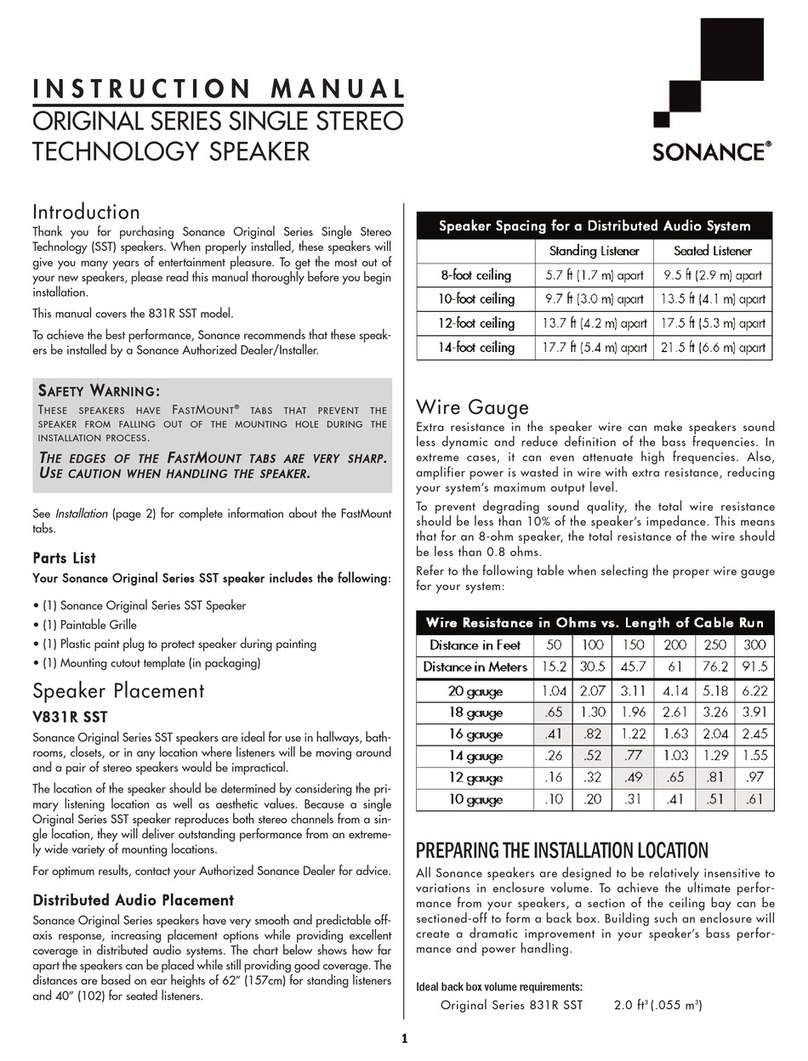AIR-SA10
4
SECTION 2
GENERAL This section is extracted
from instruction manual.
Operations
Unit (AIR-SA10/Wireless Speaker System)
Setting the clock
1Turn on the unit.
Press .
2Select the clock set mode.
Press CLOCK/TIMER MENU . If the current
mode appears on the display, press /
repeatedly to select “CLOCK,” and then press
CLOCK/TIMER ENTER .
3Set the time.
Press / repeatedly to set the hour, and
then press CLOCK/TIMER ENTER . Use the
same procedure to set the minute.
e clock settings are lost when you disconnect the
power cord or if a power failure occurs.
Listening to the sound of the
connected S-AIR main unit
You can use the S-AIR function to listen to the sound of
an S-AIR main unit in a remote location.
1Perform the procedure described in“Preparing the
unit” and check that the S-AIR indicator is lit.
2Press S-AIR CH repeatedly to select the desired
function of the S-AIR main unit.
Wireless strength
e functions that can be selected depend on the
S-AIR main unit. For details, refer to the Operating
Instructions supplied with the S-AIR main unit.
3Press VOLUME +/ to adjust the volume.
To operate the S-AIR main unit from the unit
You can perform the following operations using the
buttons on the unit.
Press To
Start playback of a CD/DVD,
etc.
Stop playback of a CD/DVD,
etc.
Pause playback of a CD/DVD,
etc.
/Select a track, le or chapter
of a CD/DVD, etc.
PRESET +/ Select a preset station when
listening to the radio.
Depending on the connected S-AIR main unit,
the operation may dier. Refer to the Operating
Instructions of the S-AIR main unit.
To listen with headphones
Connect headphones (not supplied) to the
(headphone) jack located on the rear of the unit.
Note
e elapsed playing time or remaining playing time of the
CD/DVD, etc. being played on the S-AIR main unit may not
be displayed on this unit. In this case, “ .” appears.
Tip
You can listen to the sound even when the connected S-AIR
main unit is in standby mode. For details, refer to the Operating
Instructions supplied with the S-AIR main unit.
Changing the display
To change the information on the display
while the unit is on
Press DISPLAY . Each time you press the button, the
display changes as follows:
When the unit is connected to an S-AIR main unit:
Information of the connected S-AIR main unit1)
Model name of the connected S-AIR main unit2)
Clock2)3) ...
When the unit is not connected to an S-AIR main unit:
“S-AIR” “UNLINKED”2) Clock2)3) ...
To turn o the display
You can turn o the clock display to minimize the
amount of power consumed when the unit is o (Power
Saving Mode).
Press DISPLAY . Each time you press the button, the
display changes as follows:
No display (Power Saving Mode) Clock3) ...
1) e displayed information depends on the connected S-AIR main
unit.
2) Displayed for about 8 seconds.
3) Displayed only when the clock is set.
Note
e STANDBY indicator lights up when the unit is o.
Using the Timers
e unit oers two timer functions. If you use the
Play Timer with the Sleep Timer, the Sleep Timer has
priority.
Sleep Timer:
You can fall asleep to music. is function works even if
the clock is not set.
Press SLEEP repeatedly.
Note
Even if you set the timer, no sound is output from the unit if
playback on the connected S-AIR main unit ends within the set time
period or if communication with the S-AIR main unit is cut o.
Play Timer:
You can wake up to the sound of the connected S-AIR
main unit at a preset time.
Make sure you have set the clock.
1Prepare the sound source on the S-AIR main unit.
For details, refer to the Operating Instructions
supplied with the S-AIR main unit.
Press VOLUME +/ to adjust the volume.
2Press CLOCK/TIMER MENU .
3Press / repeatedly to select“PLAY SET,”
then press CLOCK/TIMER ENTER .
“ON TIME” appears, and the hour indication ashes.
4Set the time to start playing.
Press / repeatedly to set the hour, and
then press CLOCK/TIMER ENTER .
e minute indication ashes. Use the procedure
above to set the minute.
5Use the same procedure as in step 4 to set the time
to stop playing.
6Press / repeatedly to select the desired
option.
AUTO:
Sound from the connected S-AIR main unit is
output. However, an alarm sounds in the following
cases.
When communication with the S-AIR main unit
is cut o.
When no sound is output from the S-AIR main
unit or the audio signal level is too low.
When the S-AIR main unit is not ready for
playback at the set start time. Note that the alarm
continues to sound even if the S-AIR main unit
becomes ready aer the start time has passed.
ALARM:
An alarm is output.
S-AIR:
Sound from the connected S-AIR main unit is
output. However, sound from the S-AIR main unit
is not output in the following cases. An alarm does
not sound.
When communication with the S-AIR main unit
is cut o.
When no sound is output from the S-AIR main
unit or the audio signal level is too low.
When the S-AIR main unit is not ready for
playback at the set start time. Note that sound
from the S-AIR main unit is output once the S-
AIR main unit is ready for playback even aer the
start time has passed.
7Press CLOCK/TIMER ENTER .
e display shows the timer settings.
8Press (on/standby) to turn o the unit.
e unit turns on about 40 seconds before the preset
time.
If the unit is on at the preset time, the Play Timer will
not play.
To stop the alarm
Press any button.
To activate or check the timer again
1Press CLOCK/TIMER MENU .
“SELECT” ashes in the display.
2Press CLOCK/TIMER ENTER .
3Press / repeatedly to select“PLAY SEL.”
4Press CLOCK/TIMER ENTER .
To cancel the timer
1Press CLOCK/TIMER MENU .
“SELECT” ashes in the display.
2Press CLOCK/TIMER ENTER .
3Press / repeatedly to select“OFF.”
4Press CLOCK/TIMER ENTER .
To change the setting
Start over from step 1.
Tip
e Play Timer setting remains as long as the setting is not canceled
manually.

